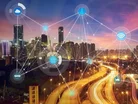IoT Alliance Australia: the impact of IoT in Australia and beyond

How would you describe the IoT Alliance Australia (IoTAA)?
IoTAA is the peak Australian Internet of Things (IoT) industry body. Our remit is to accelerate the adoption of IoT for Australia’s competitive advantage and societal benefit. We are a not-for-profit collaboration of industry, government, research and community with over 500 participating organisations and 1,000 members across 12 workstreams. The workstreams build capacity and capability across key sectors which include health, transport, smart cities, energy, water, manufacturing and food and agribusiness, as well as technology and policy areas such as data use, privacy and availability, platforms and interoperability, cybersecurity and network resilience, collaboration and education and startups and innovation.
What are IoTAA’s goals and what has it achieved?
We define and nurture the Australian IoT ecosystem across industry, government, research and communities and between supply and demand, startups and investors, and provide sound, evidence-based advocacy into appropriate policy and regulation for IoT in Australia. Our aim is to highlight and promote good IoT practice across industry verticals, enabling technologies, governance and law, and actively encourage and drive the national growth strategy underpinned by IoT enabling technologies through lighthouse projects, across key sectors of the Australian economy where Australia enjoys a competitive advantage. We also raise awareness across the community of IoT and encourage and support the development of IoT skills and education.
What opportunities does IoT technology make possible? What existing problems does it solve?
IoT offers the opportunity to source, share, analyse and act on the data people and organisations need to better understand, optimise and interact with. There are countless examples and areas of opportunity, including:
- Managing city traffic congestion – e.g. the Uber/Transport for NSW app provides optimised route and price options based on timing and the availability of public and private transport by tracking factors such as location and fullness
- Reducing the 20-30% water leakage from distribution pipes in premises
- Improving supply chain efficiency and product provenance – for higher value and lower cost
- On farm micro-climate sensing for optimising water usage, fertiliser use and harvesting cycles
- Distributed energy resources tracking, utilisation and sharing – facilitating the big pivot for the energy sector, where users become prosumers.
What are the regional challenges and possibilities of IoT adoption in Australia?
Big challenges include the lack of energised and trusted IoT ecosystems in key opportunity areas. This is important because, despite plenty of compelling business cases for IoT-enabled innovation, these often come from new players unknown to the segment – farmers, for example. We are lacking a network of trusted suppliers and integrators and a shared evidence base of case studies and proof points to build confidence.
Other challenges include skills shortages for end-to-end IoT implementations, the lack of interoperability and standards frameworks (e.g. distributed energy resources standards for data collecting and sharing across Australia), and a shortage in skills and understanding of IoT security.
A major challenge in adoption will be user trust, linked to privacy, ethics and security. The problem is that the conversation with this constituency is in its infancy in Australia.
Your IoT Impact 2019 conference and exhibition is taking place this month. Could you tell me about the details and what attendees can expect?
This year IoTAA will be running our second national IoT Impact event. We will be following a similar format to last year’s event, with two conference streams and sessions covering IoT in energy, water, health, cities, food and agriculture, transport and manufacturing, as well as on data use, cybersecurity, connectivity, AI, data authenticity and blockchain. We will also be concurrently running eight workshops, including those on sustainability and the circular economy, supply chain, IoT research and an exhibition with approximately 50 exhibitors. Last year we had almost 1,000 attendees which we hope to exceed with 1,500 this year.
Overarching themes will be:
- Are you IoT ready? – the opportunity and threats are here now
- The cross-sectoral nature of IoT, which means sharing across sectoral boundaries and new partnerships and threats
We also have outstanding high-profile speakers and panellists, including:
- NSW Minister, Customer Services Victor Dominello.
- Leanne Kemp, CEO Everledger and Chief Entrepreneur for Queensland State Government
- Chris Crozier, Chief Digital Officer, Orica
- Flavia Nardini, CEO of Fleet Communications – a standout satellite IoT provider
- Dominic Taylor, CTO, Uber
- William Ruh, Chief Digital Officer, Lend Lease
- Ed Santow, Australian Human Right Commissioner
- Dr. Mark Simpson, Chief Clinical Information Officer and Executive Director of Clinical Engagement and Patient Safety - eHealth NSW
- Chris Bennetts, Executive Director, Digital Product Delivery, Transport for New South Wales
- Dr. Ian Oppermann, Chief Data Scientist and CEO, NSW Data Analytics Centre
- John Cleland, CEO Essential Energy,
- CEO, Salesforce, Pip Marlow
- Phil Gould, Assistant Secretary, Office of the National Data Commissioner
What is the future of IoT? Are there any new developments or applications for the technology that you are anticipating?
The future of IoT is in the overlapping availability of ubiquitous data sources and the sharing of data between users and service providers, which unlocks breakthrough cost savings, efficiencies and the ability to customise services. This should enable us to be wiser in terms of resource consumption, sustainability and chronic congestion and asset utilisation challenges, such as those found in hospitals.
A major impact will be the rise of prosumers, whose data and resources will feed the future internet of energy, water, etc., something for which the rise of new players such as Salesforce as a major IoT player acts as an indicator.

